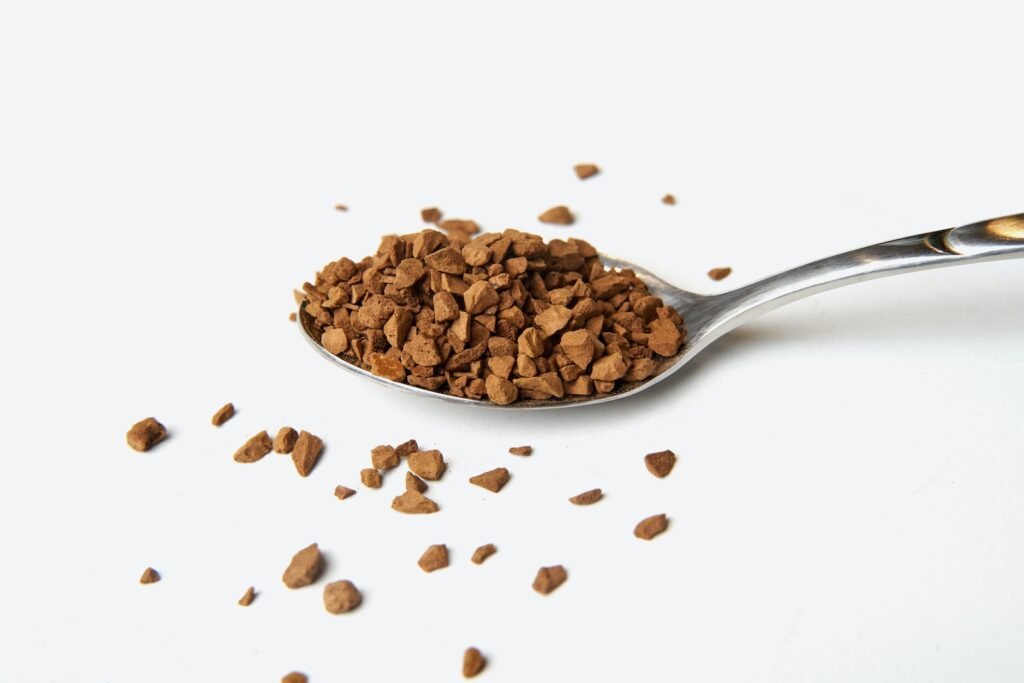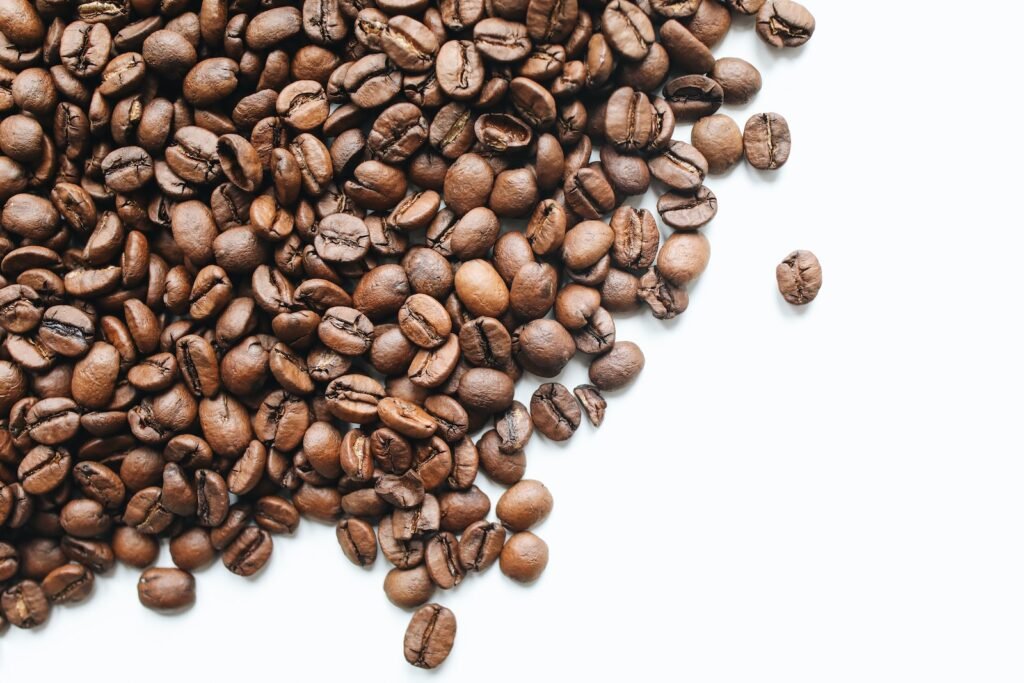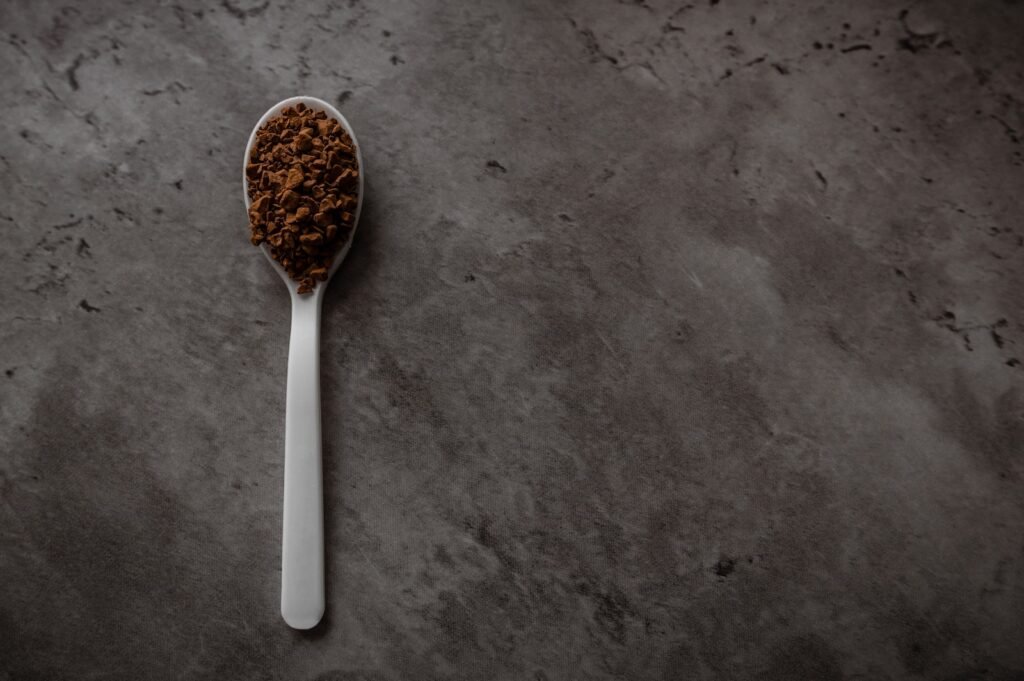Instant Coffee vs Brewed Coffee Which 1 is best
Coffee, the beloved beverage that fuels countless morning and afternoon pick-me-ups, comes in various forms, each with its devoted following. In the realm of coffee, two contenders often take center stage: instant coffee and brewed coffee.
The choice between these two coffee styles can be as personal as the grind of your beans or the method of your brew. In this exploration of instant coffee vs brewed coffee, we’ll delve deep into the nuances of flavor, preparation, and preference.
What is instant coffee?
Instant coffee is a variety of coffee that is created from brewed coffee beans that have been processed to form a concentrated coffee extract. It is sometimes referred to as soluble coffee or coffee powder.
Then, this extract is dried to create a powder that is dry and soluble. Instant coffee is a well-liked option for consumers who desire a quick and simple way to brew coffee because of its convenience and lengthy shelf life.
Here is the standard process for making instant coffee:
- Brewing: The process begins with the brewing of regular coffee, which involves steeping ground coffee beans in hot water. This brewed coffee is prepared in large quantities.
- Extraction: After brewing, the liquid coffee is separated from the coffee grounds. The result is a concentrated coffee extract that contains the soluble compounds responsible for coffee’s flavor and aroma.
- Dehydration: There are two primary methods used to dehydrate this coffee extract:
- Freeze-Drying: In freeze-drying, the coffee extract is frozen and then placed in a vacuum chamber. The low pressure causes the frozen water in the extract to sublimate directly into vapor, leaving behind coffee solids. This method is known for preserving the flavor and aroma of the coffee.
- Spray-Drying: In spray-drying, the coffee extract is sprayed into a hot, dry chamber. The water in the extract evaporates rapidly, leaving behind small coffee particles. While this method is faster and less expensive, it may result in some flavor loss compared to freeze-drying.
- Packaging: The resulting dry coffee powder is then packaged into jars, sachets, or other containers, ready for consumers to use. To make a cup of instant coffee, you simply mix the powder with hot water and stir until it dissolves.
Instant coffee is known for its convenience, as it requires no special equipment or brewing time. It’s a quick and easy way to prepare coffee at home, in the office, or while traveling.
While instant coffee may not offer the same complexity of flavors and aromas as freshly brewed coffee, it provides a simple and consistent coffee experience for those who prioritize speed and convenience.

How is Instant Coffee Made?
Instant coffee is made through a multi-step process that transforms brewed coffee into a dry, soluble powder. This process involves several key stages, from brewing the coffee to the final dehydration step. Here’s a detailed explanation of how instant coffee is made:
- Selection of Coffee Beans: The process begins with the selection of coffee beans. Different varieties and origins of coffee beans are chosen to create specific flavor profiles. The beans are then roasted to the desired level, which greatly influences the final flavor of the instant coffee.
- Brewing: The coffee beans are ground to a fine consistency, similar to what is used for traditional brewing methods. The ground coffee is then brewed by steeping it in hot water. This brewing process extracts the soluble compounds responsible for the flavor, aroma, and color of the coffee.
- Filtration and Separation: After brewing, the liquid coffee is separated from the solid coffee grounds. This separation is crucial to create a coffee extract that contains the desired soluble compounds.
- Concentration: The liquid coffee extract is then concentrated to remove excess water. This is typically done by heating the extract to evaporate some of the water content. The goal is to create a highly concentrated coffee solution.
- Dehydration:
- Freeze-Drying: In the freeze-drying method, the concentrated coffee extract is frozen into a solid state. It is then placed in a vacuum chamber where the low pressure causes the frozen water within the coffee extract to sublimate directly into vapor without passing through the liquid phase. This leaves behind coffee solids in the form of a freeze-dried coffee product.
- Spray-Drying: In the spray-drying method, the concentrated coffee extract is sprayed into a hot, dry chamber. The hot air rapidly evaporates the water from the extract, leaving behind small coffee particles. These particles are collected and further processed into a dry powder.
- Cooling and Packaging: After dehydration, the resulting dry coffee product is cooled to room temperature and carefully packaged into containers. These containers can be jars, sachets, or other forms suitable for consumers.
- Quality Control: Throughout the manufacturing process, rigorous quality control measures are taken to ensure the final product meets specific taste, aroma, and appearance standards. Quality control includes taste testing, aroma analysis, and visual inspections.
The final product is a soluble instant coffee powder that can be easily reconstituted by adding hot water. Instant coffee is appreciated for its convenience, long shelf life, and ease of preparation.
While it may not offer the same depth and complexity of flavor as freshly brewed coffee, it provides a quick and consistent way to enjoy coffee in various settings.
The choice of brewing methods, coffee bean selection, and quality control measures can significantly impact the flavor and quality of the instant coffee produced.
What is Brewed Coffee?
Brewed coffee, also known as drip coffee or filtered coffee, is a popular method of preparing coffee that involves extracting the flavors, aromas, and caffeine from ground coffee beans using hot water.
This process typically relies on a drip coffee maker, but it can also be achieved through various other brewing methods like pour-over, French press, AeroPress, or espresso machines.
Here’s a detailed explanation of what brewed coffee is and how it’s made:
Ingredients:
- Coffee Beans: High-quality coffee beans, which can vary in origin, roast level, and blend.
- Water: Fresh, clean water heated to the appropriate temperature.
Brewing Process:
- Grinding: Whole coffee beans are first ground to the desired consistency just before brewing. The grind size can be adjusted to suit the chosen brewing method, with finer grinds typically used for espresso and coarser grinds for methods like the French press.
- Heating Water: Fresh water is heated to the ideal temperature for brewing coffee, which is usually between 195°F to 205°F (90°C to 96°C). The water temperature is crucial because it affects the extraction process.
- Brewing: The ground coffee is placed in a filter or coffee basket within the coffee maker. Hot water is then poured over the coffee grounds or dripped through them, depending on the brewing method. The water flows through the grounds, extracting soluble compounds such as oils, sugars, and acids. This process takes a few minutes and results in a liquid known as “brewed coffee.”
- Drip Coffee Maker: In a drip coffee maker, the hot water is released onto the coffee grounds in the filter basket. It then passes through the grounds and collects in a coffee pot or carafe below.
- Pour-Over: In a pour-over method, the hot water is manually poured over the coffee grounds in a controlled, circular motion. Gravity helps the water pass through the grounds and into a container below, such as a coffee pot or cup.
- French Press: In a French press, hot water is mixed with the coffee grounds, and after a steeping time, a metal or mesh plunger is pressed down to separate the grounds from the liquid coffee.
- Espresso Machines: Espresso machines force hot pressurized water through finely-ground coffee beans, resulting in a concentrated and rich coffee known as espresso. Espresso can be consumed as is or used as the base for various espresso-based drinks like lattes and cappuccinos.
- Pour and Serve: The brewed coffee is typically poured into a cup or mug and can be enjoyed plain or with added milk, cream, sugar, or flavorings according to personal preference.
Brewed coffee offers a wide range of flavors and aromas, influenced by factors such as the coffee bean type, roast level, grind size, brewing time, and water temperature.
This method allows coffee enthusiasts to explore the intricacies of coffee, appreciate its unique characteristics, and customize their brew to suit their taste preferences.

Differences Between Instant and Brewed Coffee
Instant and brewed coffee are distinct in several ways, including taste, preparation process, caffeine content, and availability. Here’s a detailed comparison of these differences:
1. Taste:
- Instant Coffee: Instant coffee is known for having a milder and simpler flavor profile compared to brewed coffee. The flavor can be somewhat one-dimensional, with fewer nuances and complexity. This is because some of the volatile aroma compounds are lost during the dehydration process.
- Brewed Coffee: Brewed coffee offers a wider range of flavors and aromas. The taste can vary significantly depending on factors such as the coffee bean’s origin, roast level, grind size, and brewing method. Brewed coffee often has a richer, more complex flavor with notes like fruity, nutty, chocolatey, or floral, making it favored by coffee connoisseurs.
2. Preparation Process:
- Instant Coffee: Instant coffee is incredibly convenient and quick to prepare. You only need hot water and a spoon to mix the instant coffee powder. It takes a matter of seconds to make a cup.
- Brewed Coffee: Brewing coffee takes more time and equipment. You’ll need coffee beans, a grinder (if using whole beans), a coffee maker or brewing device, and potentially additional accessories like filters and a kettle. The brewing process can take several minutes to complete, depending on the method chosen.
3. Caffeine Content:
- Instant Coffee: Instant coffee generally contains slightly less caffeine per serving compared to brewed coffee. The exact caffeine content can vary based on the brand and type of instant coffee.
- Brewed Coffee: Brewed coffee tends to have a higher caffeine content per serving. The caffeine concentration can vary depending on factors like the coffee-to-water ratio and brewing time. Espresso, a concentrated form of brewed coffee, has even higher caffeine content.
4. Availability:
- Instant Coffee: Instant coffee is widely available and can be found in most grocery stores and convenience stores. It’s also readily available online. Its long shelf life makes it convenient for storage.
- Brewed Coffee: Brewed coffee is available in coffee shops, cafes, and restaurants. It’s typically made to order and not as readily available for purchase as instant coffee. However, brewing equipment and coffee beans for home brewing are widely available in stores and online.
In summary, the choice between instant and brewed coffee depends on your preferences, convenience needs, and desired coffee experience. Instant coffee is prized for its quick and easy preparation, longer shelf life, and simplicity, but it may lack the depth of flavor found in brewed coffee.
Brewed coffee offers a more diverse flavor profile, but it requires more time and equipment to prepare. Ultimately, the choice comes down to personal taste and the importance of factors like convenience and caffeine content in your coffee-drinking routine.
Choosing Between Instant and Brewed Coffee
Choosing between instant coffee and brewed coffee depends on several factors, including convenience, flavor preference, and cost. Here’s a breakdown of how these factors can help you make a decision:
1. Convenience:
- Instant Coffee: If convenience is a top priority for you, instant coffee is the clear winner. It’s incredibly easy and quick to prepare. All you need is hot water and a spoon to mix the coffee powder. Instant coffee is ideal for those who are always on the go, in a hurry, or in situations where brewing equipment isn’t available, such as during travel or in the office.
- Brewed Coffee: Brewed coffee, while more time-consuming to prepare, offers a more involved and potentially enjoyable coffee-making ritual for those who have the time and equipment. Brew coffee could be worth the extra work if you love the process of choosing beans, grinding them, and experimenting with various brewing techniques.
2. Flavor Preference:
- Instant Coffee: Instant coffee tends to have a milder, simpler flavor profile compared to brewed coffee. If you prefer a quick and straightforward coffee experience without a wide range of flavor notes, instant coffee may suffice.
- Brewed Coffee: Brewed coffee offers a broader spectrum of flavors and aromas. It allows you to explore the complexity of coffee, with different beans, roast levels, and brewing methods yielding unique taste profiles. If you savor the richness, depth, and diversity of coffee flavors, brewed coffee is likely your choice.
3. Cost:
- Instant Coffee: Instant coffee is often more budget-friendly compared to brewed coffee. The cost of instant coffee per cup is typically lower, and you won’t need additional equipment like a coffee maker or grinder. Plus, there’s less wastage since you can prepare only the amount you need.
- Brewed Coffee: Brewed coffee can be more expensive, especially if you opt for high-quality coffee beans and invest in brewing equipment. Brewing coffee at home rather than purchasing it from coffee shops can be more cost-effective in the long term, despite what it may first appear to be.
In summary, the choice between instant coffee and brewed coffee ultimately depends on your priorities and preferences:
- Choose instant coffee if you value convenience above all else, want a quick and hassle-free coffee experience, and are not overly concerned with the complexity of flavors.
- Choose brewed coffee if you’re passionate about coffee, enjoy experimenting with different beans and brewing methods, savor the intricate flavors of coffee, and don’t mind investing more time and potential money into your coffee-making routine.
Remember that you don’t have to stick with one type of coffee exclusively; you can enjoy both instant and brewed coffee depending on the circumstances and your mood.
Frequently Asked Questions about instant coffee vs brewed coffee
Which is better, instant coffee or brewed coffee?
The choice between instant and brewed coffee depends on your preferences and priorities. Instant coffee is more convenient but may have a simpler flavor profile, while brewed coffee offers a wider range of flavors but requires more time and equipment. It’s a matter of personal taste and lifestyle.
Is instant coffee as healthy as brewed?
Generally, brewed coffee and instant coffee have similar health benefits. Both can provide antioxidants and potential health benefits when consumed in moderation. However, the quality of the coffee and the additives (e.g., sugar, creamer) you use can impact the overall healthiness of your coffee.
Are brewed and instant coffee the same thing?
No, brewed coffee and instant coffee are not the same. Unlike instant coffee, which is created by dehydrating steeped coffee into a dry, soluble powder, brewed coffee is created by steeping ground coffee beans in hot water. Their flavors, methods of preparation and practicality vary.
Why does brewed coffee taste better than instant?
Brewed coffee often tastes better to many people because it typically has a richer and more complex flavor. This is so that more of the volatile fragrance molecules and oils that give brewed coffee its flavor and scent may be retained, as opposed to instant coffee, which may lose some of these components during the dehydration process.
What is the healthiest way to drink coffee?
The healthiest way to drink coffee is to enjoy it in moderation and without excessive additives like sugar and high-fat creamers. Black coffee, or coffee with a small amount of milk or a natural sweetener, can be a healthier option. Additionally, using high-quality coffee beans and filtered water can enhance the overall quality of your coffee.
What is the best way to drink coffee?
The best way to drink coffee is a matter of personal preference. Some people enjoy the simplicity and convenience of instant coffee, while others prefer the complexity and customization of brewed coffee.
Ultimately, the best way to drink coffee is the way that brings you the most enjoyment and satisfaction. Experiment with different types of coffee and brewing methods to find your preferred coffee experience.

Conclusion
In the end, the “instant coffee vs brewed coffee” debate is all about your lifestyle, preferences, and the coffee experience you seek. If you’re all about convenience and a quick caffeine kick, instant coffee is your trusty companion.
However, brewed coffee is your canvas if you’re enthusiastic about coffee as an art form and yearn for the richness and depth of tastes.
Remember, there’s no right or wrong choice here – it’s a matter of personal taste. Many coffee lovers even enjoy both, depending on the situation.
Whether you’re sipping a steaming cup of instant coffee or meticulously brewing your morning brew, coffee’s true essence lies in that perfect sip that warms your soul. So, take your pick, and may your coffee moments always bring you comfort and delight.
